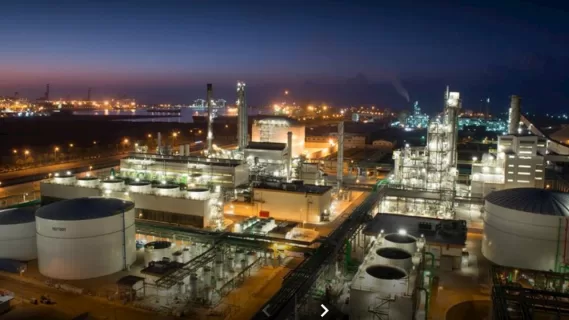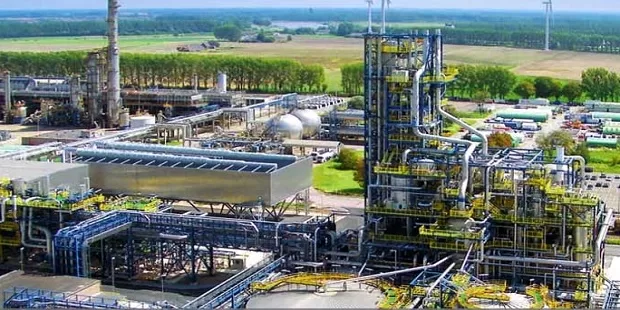Updated November 11, 2025- The African Export-Import Bank (Afreximbank) has approved a $1.3 billion loan that will be utilized to support the construction of Angola’s Soyo Fertilizer Plant. This information on the fertiliser plant was revealed by the Minister of Mineral Resources, Petroleum, and Gas Diamantino Pedro Azevedo in an announcement on Friday.
The $2 billion ammonia and urea plant is a joint investment between state-owned Sonagas and the OPAIA Group. Furthermore, the project aims to reduce Angola’s dependence on imported fertilisers. Currently, Angola imports over $120 million worth of fertilisers annually to meet local consumption demands.
“This project is crucial because Angola currently imports fertilisers. Afreximbank has just approved financing of around $1.3 billion for the development of the facility,” Azevedo mentioned during a visit to Botswana.

Angola’s Soyo Fertilizer Plant Project Factsheet
Project name: Soyo Fertilizer Industrial Complex
Location: Soyo, Zaire Province, Angola (near the Angola LNG plant)
Project promoter: Amufert S.A. (a subsidiary of the OPAIA Group, in partnership with state-owned Sonangol Natural Gas (Sonagas))
Product: Ammonia and urea fertilizer (granulated urea)
Cost: approximately $2 billion
Financing: African Export-Import Bank (Afreximbank) is the Mandated Lead Arranger, committing $1.3 – $1.4 billion in debt funding.
Production capacity:
- Ammonia: 2,300 metric tons per day (MTPD)
- Urea: 4,000 metric tons per day (MTPD) or approx. 1.38 million tonnes per year
Feedstock: Natural Gas (from domestic resources, notably supplied by the Falcão project
Expected timeline:
- Construction start: Slated for 2025
- Expected operation Start: 2027
Key contractors and technology:
- Project Management Consultancy (PMC): KBR
- Urea Technology Licensor: Toyo Engineering Corporation (TOYO) using proprietary ACES21 technology
- EPC contractor: Wuhuan Engineering Co., Ltd. (Wuhuan)
Expected jobs created: approximately 4,700 total jobs. 3,500 are to be created during construction and 1,200 permanent jobs.
Afreximbank Appointed Lead Arranger for the Plant’s Development
The pan-African lender was appointed lead arranger for the project last year, a role it confirmed in August 2024, according to a Reuters report.
The plant will be located in Soyo, along Angola’s Atlantic coast, providing easy access to natural gas, energy, water, and a commercial port.
Job Opportunities and Significance
Scheduled for completion in 2027, the plant has a production capacity of 4,000 metric tons per day.
The project will generate significant benefits, including the creation of 4,700 jobs, 3,500 during the construction phase and 1,200 permanent positions once completed.
It will also contribute to Angola’s economic diversification by leveraging natural gas resources, thereby reducing reliance on oil revenues.
Surplus production will position Angola as a major fertiliser exporter in Africa, boosting regional economic integration and promoting intra-African trade.
Reported on August 15, 2024
Afreximbank pledges $1.4 billion for Angola’s Fertilizer Plant , signaling a major agricultural advancement. Set to begin production in 2027, the project, signed today in Luanda, aims at national self-sufficiency. Afreximbank and Amufert, under Opaia Group, will manage the Soyo-based facility. Moreover, Benedict Oramah, President of Afreximbank, emphasized the plant’s impact on the country’s food sovereignty.
He noted the critical need to reduce reliance on erratic international exports. Currently, Angola imports fertilizers worth over $1.4 billion annually, highlighting the urgency for local production.
Angola’s Fertilizer Plant a Part of Angola’s General Development
Afreximbank is allocating $2.2 billion to boost Angola’s development, including major projects like Cabinda refinery. The bank is also discussing support for the Lobito refinery with Sonangol, Angola’s state oil company.
Diamantino Azevedo praised the project’s readiness and global competitiveness. He credited Sonangol for providing the necessary 10% of gas via Sonagás.Additionally the government has facilitated this by setting a competitive gas price and providing limited guarantees.
Moreover, they also signed a deal with Opaia Group and K-Mineração for a potassium concession in Cabinda, boosting compound fertilizer production. He criticized Western and Asian banks for favoring their national interests, but praised Afreximbank for its fair approach.
Kapaia shared that the project, costing about $2 billion, will produce 1.3 million tons annually. This will eliminate Angola’s need to import fertilizers, transforming its agricultural sector. This initiative not only secures Angola’s agricultural future but also encourages African self-reliance, reducing the continent’s exposure to global supply chain disruptions.
Similar Projects
Cabinda phosphate project is an open-pit mining and fertiliser production development located in Cabinda Province, Angola, Central Africa.
The project is being developed by a joint venture between Minbos Resources (85%) and local partners (15%).

The scoping study for the project was completed in August 2020 while the definitive feasibility study (DFS) was completed in October 2022. The estimated initial capital cost for the development is $54.17m while the expected mining life is 20 years.
Scope of the Cabinda Project
The project involves the construction of the Futila fertiliser plant in Cabinda, north-west Angola, and mining of the Cacata phosphate deposit. Mining operations are expected to commence in the fourth quarter (Q4) of 2023.
The phosphate deposits and phosphatic horizons of Cabinda consist of marine and fluvial gravels sands and silts within the Cretaceous and Eocene sediments of the Atlantic coastal basin.
The Eocene age deposits within the basin are locally referred to as the Upper Phosphate Member, the Pebbly Foraminiferal Clay and Limestone Unit, and the Lower Phosphate Member and are of Maastrichtian or Eocene age.
Developers of the Cabinda Project
Engineering company DRA Global was engaged as the principal engineer for the DFS and was responsible for the process plant design and costing, including infrastructure for the granulation plant.
Moreover, the International Fertilizer Development Center (IFDC) conducted the fertiliser trials, granulation, and beneficiation pilot testing, provided process design inputs, and performed marketing studies. FEECO International provided the plant equipment design.
SRK Consulting was responsible for the mineral resource statement while Orelogy provided the pit’s optimisation, mine design, scheduling, mineral reserve statement, and contract mining cost estimation.
Lasely, HCV Africa was responsible for conducting the environmental baseline and social studies while Grupo Simples was engaged in the Environmental Impact Study and Waste Management Plan.
Also read: US$1.3 Billion Lobito Corridor Development Deal Signed by Angola

